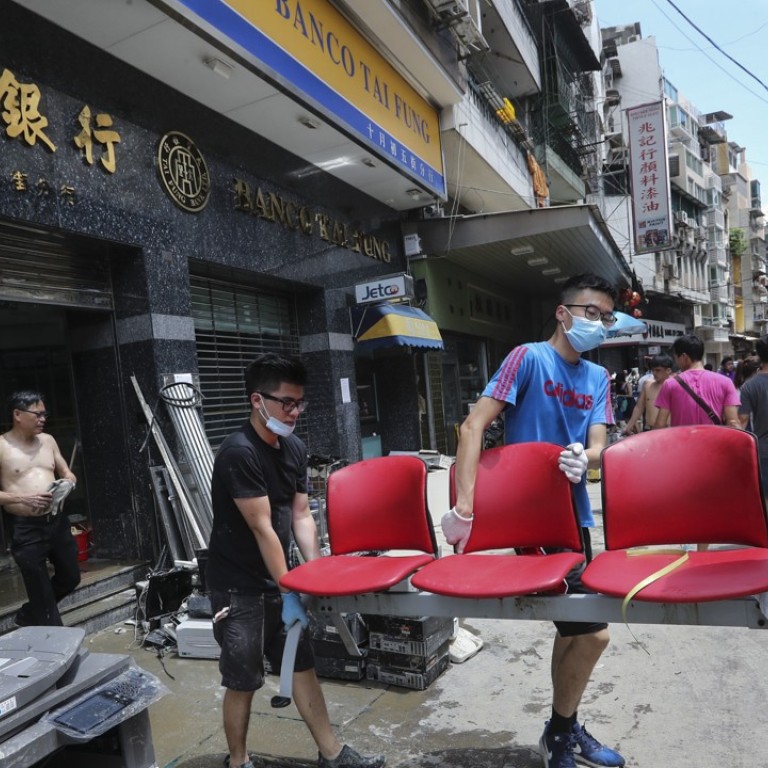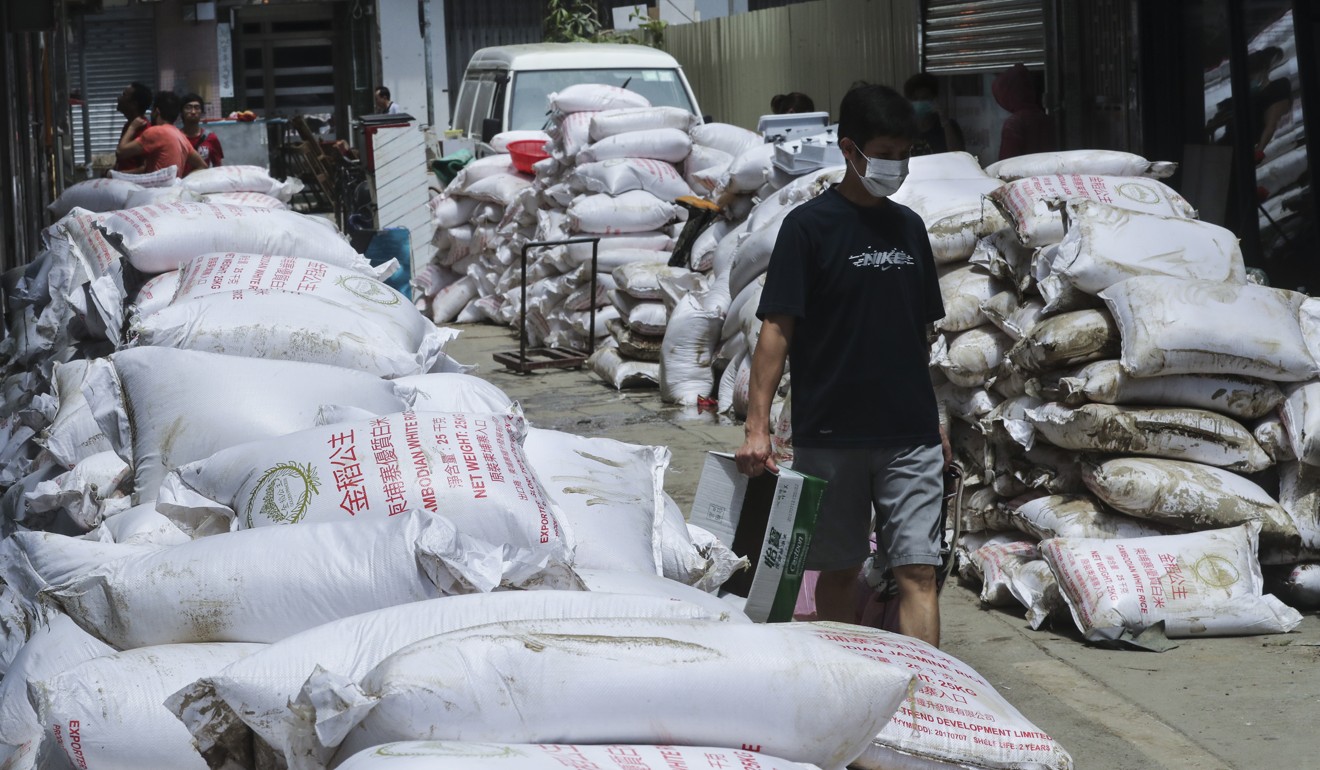
No water, rubbish floating in the streets, and another storm on the way: Macau struggles to recover after Typhoon Hato
Thousands of residents in casino hub go without running water as clean-up operation continues after worst storm in half a century
Thousands of Macau residents were facing a second day of water shortages on Friday as the casino hub tried to get back on its feet after the onslaught of Typhoon Hato.
Flooded streets filled with debris and the smell of rotting rubbish sparked health fears in the most affected areas, two days after the worst storm in half a century struck the former Portuguese enclave, leaving 10 people dead.
The government said on Friday that the city’s running water supply would only be fully restored in one or two days. Dozens of residents were seen queuing up with buckets to collect water from fire hydrants, while others struggled to find drinking water in supermarkets and convenience stores.
Chinese army garrison called in to help Macau rescue and recovery efforts in wake of Typhoon Hato
The typhoon left an unprecedented trail of destruction in the world’s largest gambling destination, and forecasters on Friday warned that another storm was on its way.

A spokeswoman for the city’s weather bureau said they were planning to hoist the typhoon warning signal No 1 on Saturday, as Typhoon Pakhar closed in. The storm was expected to hit Macau at noon on Sunday, when the warning signal could be raised to No 8, indicating wind speeds ranging from 63km/h to 117km/h were expected, and gusts reaching about 180km/h.
Some areas might suffer further minor floods, the spokeswoman said. She called on residents to take precautions.
Hong Kong star Chow Yun-fat spotted clearing fallen tree branches on roadside after Hato
“We no longer have drinking water here. I opened the shop at 8am on Thursday and people bought all the water immediately. I sold three boxes of 24 bottles really quickly,” said Leong Ikei, 27, the owner of a fruit and drinks shop near the Inner Harbour, one of the most heavily hit locations.
She said she could not recall a similar situation in Macau.

“I have had no delivery from my supplier. I don’t know when I will be able to get more water,” she said. Her supplier was based in one of the most affected areas and was not taking orders.
She said she hoped the government would send drinking water to residents.
“Some people who have tap water are drinking it. They do not know it can be dangerous. I am concerned about diseases, also because of all the rubbish in the streets,” she said.
Five dead, hotels facing two-day shutdown after Typhoon Hato knocks out power in Macau
Another fruit and drinks shop in the Inner Harbour only had six bottles of water left at around 2pm on Friday. The owner, Mak Kun-po, said he usually sold one box of 10 bottles a day. On Thursday and Friday, he sold 10 boxes each day.
“I don’t know when the supplier will come,” Mak said while cleaning mud out from his shop washed in by the floods.
Catarina Cortesao Terra, 46, a civil servant with two young children, said it had been very hard to cope with the lack of water. She had been using water from dehumidifiers and had filled up buckets at friends’ homes to meet their basic needs.
“It has been really hard. We have had no water since Wednesday and no electricity for a day,” she said. “We feel that the government’s crisis response has not been efficient at all.”
Two bodies found in Macau car park raise Typhoon Hato death toll to 12
Several other civil servants complained they had not been given time off to help their families. Some public departments were operating with no water or air conditioning.
At least five convenience stores and supermarkets that the Post visited had their shelves filled with soft drinks but no water.
A 7-Eleven near the Inner Harbour had run out not only of water, but also biscuits, chocolate and instant noodles. A staff member said that every time some items were put on shelves they sold out in less than an hour.
“Every day in the morning, we get supplies, but we run out of stock,” she said.
Fast-food chains had reduced menus. McDonald’s in some locations was not selling drinks and had no burgers.
Ferry services between Hong Kong and Zhuhai suspended indefinitely in wake of Typhoon Hato
Several residents told the Post there were shops charging 150 patacas (US$18.25) for two bottles of water, and some restaurants were charging 200 patacas for a lunch box of rice and meat.
The Post saw groups of volunteers distributing food, water and surgical masks in the streets, while several professionals were seen disinfecting roadsides.
At a press conference on Friday evening, authorities acknowledged they had been struggling to collect the rubbish around the city. They announced 40 new points of collection and called for the cooperation of residents.
“We don’t have much time because another typhoon is on the way ... These are 24 golden hours. We know that the next typhoon will complicate things,” said José Tavares, president of the Civic and Municipal Affairs Bureau.
He said his main concern was “public health safety”, and that the government’s main aim was to collect as much rubbish as possible between Friday night and Saturday during the day in order to avoid outbreaks of any diseases.
Authorities called for more volunteers to clean up the city and asked people to put rubbish in bags and avoid driving cars so as to leave the roads open for rubbish trucks.

